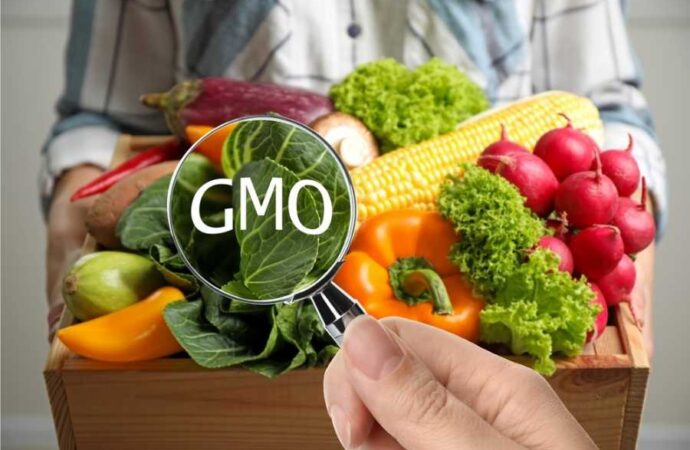Genetically modifying food (GMO) may seem like a concept straight out of a science fiction movie, but many of the foods we eat—and even those consumed by animals—have altered DNA. Scientists often employ this process to protect crops during growth. However, the scope of genetic modification extends beyond fruits and vegetables. Despite ongoing safety concerns, prominent health organizations such as the FDA and the World Health Organization (WHO) assert that genetically modified foods, often called GM foods or bioengineered foods, are safe to consume.
Understanding GMOs
Genetically modified foods derive from genetically modified organisms (GMOs), which can include animals, plants, or microorganisms. Scientists utilize genetic engineering techniques—also known as modern biotechnology, gene technology, or recombinant DNA technology—to alter the DNA of these organisms. This technology enables scientists to enhance specific traits, such as pest resistance in crops or improved nutritional profiles in food products.
For instance, genetically modified cotton finds use in textiles, while genetically engineered microorganisms produce medications like human insulin. Commonly modified foods include corn and soybeans, which can transform into various products like cornstarch, corn syrup, soybean oil, and canola oil, as shown in the figure below.

Why Do We Genetically Modify Foods?
The main reasons for genetic modification focus on helping crops resist diseases and enhancing their resilience against herbicides, which control harmful weeds. These modifications can lower food prices by increasing harvest yields, thereby improving food security during unpredictable growing seasons.
Genetic modification can also boost the nutritional value of certain foods. For example, scientists engineer genetically modified soybeans to produce healthier oils devoid of harmful trans fats. Additionally, they have introduced beta-carotene into rice to prevent blindness in children in developing countries.
Key Objectives of Genetic Modification
Scientists develop GMOs with specific advantages in mind, such as:
- Growth Improvement: Enhancing the rate and quality of crop growth.
- Nutritional Content: Increasing the nutritional value of foods.
- Sustainability: Promoting sustainable agricultural practices.
- Pest Resistance: Introducing traits that make crops more resistant to pests.
- Ease of Farming: Simplifying farming practices through increased resilience and reduced pesticide use.
While selective breeding can yield desirable traits over generations, genetic modification accelerates this process through targeted scientific techniques.
Safety Assessments and Regulations
Regulatory authorities conduct rigorous safety assessments tailored to evaluate each GM food individually. The technology used in GM foods allows specific genes to transfer from one organism to another, including nonrelated species. As a result, each GM food must undergo a separate safety evaluation, making it impossible to generalize the safety of all GM foods.
Currently, GM foods on the international market go through stringent safety assessments, demonstrating no health risks to humans. Continuous application of safety assessments based on Codex Alimentarius principles, combined with adequate post-market monitoring, is essential for ensuring GM food safety. The WHO’s Department of Food Safety provides guidelines for assessing the safety of GM foods, focusing on direct health effects, potential allergenicity, nutritional impacts, and unintended consequences arising from genetic modifications.
Benefits of GMOs
- Crop Protection: Many GMOs enhance resistance to diseases caused by insects or viruses, leading to higher crop yields.
- Herbicide Tolerance: Certain GM crops withstand specific herbicides, reducing the overall quantity of herbicides used in agriculture.
- Consumer Appeal: GMO crops, such as apples and potatoes that resist bruising or browning, attract consumer interest.
- Nutritional Value: Some GMOs, like golden rice, enhance nutritional content, providing higher levels of vitamin A.
Concerns About GMOs
Despite the thorough safety assessments conducted on GM foods, concerns persist regarding potential long-term health effects. Key issues include:
Allergic Reactions
GMO foods may provoke allergic reactions if a genetic change introduces new allergens. For instance, combining a gene from a Brazil nut with a soybean could trigger allergic responses in individuals with nut allergies. The WHO advises against using allergenic DNA unless the resulting proteins are proven non-allergenic.
Cancer Risks
Concerns have surfaced regarding the potential for GMO foods to increase cancer risk due to elevated levels of carcinogenic substances in the body. However, the American Cancer Society finds no evidence linking current GMO foods to increased or decreased cancer risk.
Antibacterial Resistance
Some GMOs resist specific antibiotics, raising theoretical concerns about these genes transferring to humans or animals. While the likelihood remains minimal, health authorities maintain guidelines to mitigate this risk.
Changes in Human DNA
Some experts have worried about the possibility of food DNA surviving digestion and affecting human genetics. Although small fragments of DNA can enter the bloodstream, no evidence suggests they impact genetic makeup or human health.
Organ Toxicity
Earlier studies hinted at the potential impacts of GMO foods on organs such as the liver and kidneys, but these findings lack conclusive evidence, warranting further research.
Conclusion
The debate surrounding GMOs encompasses a wide range of scientific, ethical, and safety considerations. GM foods offer significant potential benefits for food security and nutritional enhancement, but ongoing research and regulation are crucial to ensuring their safety and efficacy. As science progresses, public understanding and acceptance of genetically modified foods will likely continue to evolve.
 Food Manifest
Food Manifest 
















